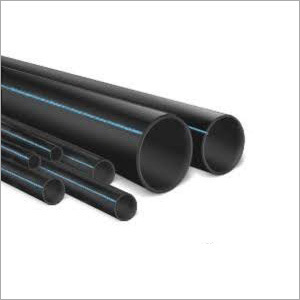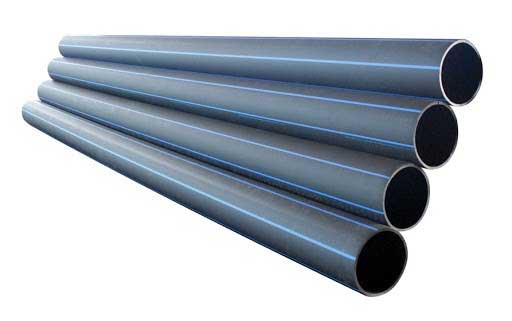How to Connect hdpe pipe fittings Midland TX for Reduced Maintenance
Wiki Article
Check Out the Production Refine Behind High-Quality HDPE Pipe and Its Applications
The production process of premium HDPE pipelines is elaborate and systematic. It begins with the option of basic materials that improve performance. Following this, ethylene undertakes polymerization to create material, which is then formed through extrusion. Quality control is vital, making certain that the end product meets stringent standards. However, the trip of HDPE pipes doesn't finish with production. Their applications across various markets reveal a wider significance worth taking a look at.Recognizing HDPE: Qualities and Advantages

High-density polyethylene (HDPE) is a functional polycarbonate understood for its durability and resistance to various environmental elements. This product displays excellent tensile toughness, making it ideal for requiring applications. Its low-density structure adds to a lightweight product, assisting in ease of handling and installation. HDPE additionally showcases remarkable resistance to chemicals, which reduces deterioration when revealed to severe substances.
The material's low moisture absorption additionally enhances its long life, making it optimal for use in pipelines and storage tanks. In addition, HDPE is immune to ultraviolet (UV) radiation, ensuring that items maintain their stability also when subjected to sunshine. In addition, its adaptability permits for the production of intricate forms without compromising toughness. The eco-friendly nature of HDPE, usually originated from recycled materials, includes to its allure, promoting lasting methods in manufacturing. Generally, these buildings and advantages make HDPE a favored selection for various industrial and consumer applications.
Basic Material Choice for HDPE Manufacturing
The choice of resources for HDPE manufacturing is vital to validate the final product meets the preferred specs and quality standards. High-density polyethylene (HDPE) is mainly produced from polymerized ethylene, stemmed from nonrenewable fuel sources such as all-natural gas or crude oil. The top quality of these feedstocks greatly affects the mechanical and thermal homes of the final HDPE.Ingredients likewise play a considerable function in boosting HDPE's efficiency, including antioxidants, UV stabilizers, and colorants, which improve resilience and resistance to environmental variables. The choice procedure need to think about not only the chemical make-up of the raw products but also their processing attributes to assure efficient manufacturing.
Additionally, the sourcing of resources ought to focus on sustainability and compliance with environmental policies, as responsible techniques are important in today's market. Ultimately, mindful raw product choice lays the structure for producing top notch HDPE pipelines appropriate for varied applications.
The Extrusion Process: Forming HDPE Pipe
The extrusion process plays an important function in shaping HDPE pipes, starting with meticulous product prep work methods that ensure optimal flow and consistency. Equally vital is the design of the die, which directly influences the final measurements and surface quality of the pipe. Together, these factors contribute greatly to the efficiency and quality of HDPE pipe production.Material Preparation Methods
Effective manufacturing of HDPE pipelines begins with thorough product preparation methods, specifically the extrusion procedure. During this stage, high-density polyethylene material is very first dried to remove moisture, making certain perfect circulation attributes. The material is after that fed right into the extruder, where it undergoes heating and melting, changing right into a viscous state. This home heating procedure is meticulously regulated to keep the material's integrity and efficiency. The molten HDPE is compelled with a die, forming it into a continuous pipe type. Correct temperature management during extrusion is vital, as it straight influences the product's properties and the end product quality. When shaped, the HDPE pipe is cooled down and reduced to specified sizes, ready for succeeding handling and applications.Die Design Significance
Precision in die layout plays a vital function in the extrusion procedure of HDPE pipelines. The die serves as the final shaping tool, directly influencing the pipe's dimensions, wall surface thickness, and surface finish. A properly designed die assurances uniform product circulation, decreasing issues such as abnormalities and weak areas. The geometry of the die should be enhanced to suit the specific residential properties of HDPE, including its viscosity and thermal behavior throughout extrusion. Additionally, the cooling rate of the material as it goes through the die can noticeably influence the pipeline's architectural stability. Investing in innovative die modern technology is vital for makers aiming to create high-grade HDPE pipes that meet market criteria and customer expectations.Quality Assurance Measures in HDPE Manufacturing
Although different factors influence the high quality of HDPE pipe manufacturing, effective quality control procedures are essential to ensure uniformity and integrity in the end product. Key quality assurance methods include rigorous product assessment, confirming that the raw polyethylene meets established requirements for purity and thickness. Throughout the extrusion procedure, criteria such as temperature, pressure, and cooling time are closely monitored to keep dimensional accuracy and architectural stabilityIn enhancement, post-production testing is vital; suppliers often perform hydrostatic tests to analyze the pipeline's toughness and resistance to pressure. Visual assessments for surface problems better boost quality control. Accreditation from relevant standards organizations, like ASTM or ISO, offers an added layer of credibility. By applying these detailed quality assurance steps, producers can minimize issues, enhance performance, and guarantee that the HDPE pipelines fulfill the certain demands of different applications, eventually leading to client satisfaction and rely on the item.
Applications of HDPE Pipeline Across Industries
HDPE pipes are made use of across various markets because of their durability and versatility. In water distribution systems, they guarantee reliable shipment, while in wastewater administration, they supply trusted solutions for waste transport. Additionally, agricultural watering networks take advantage of HDPE's resistance to deterioration and flexibility, making it a perfect option for contemporary farming methods.
Water Circulation Equipments
A considerable number of sectors count on high-density polyethylene (HDPE) pipelines for effective water circulation systems. Known for their longevity and resistance to corrosion, HDPE pipes are widely made use of in local water system networks, farming watering, and commercial applications. Their light-weight nature facilitates simple handling and installment, decreasing labor prices and time. Additionally, HDPE pipes can accommodate various stress degrees, making them appropriate for both low and high-pressure systems. hdpe pipe suppliers Midland TX. The versatility of the product enables seamless combination right into existing facilities, reducing the need for substantial excavation. Additionally, HDPE's resistance to chemical seeping warranties that the water provided remains safe and clean, making it a perfect option for preserving the quality of potable water across various marketsWastewater Monitoring Solutions
Efficient water circulation systems likewise pave the means for ingenious wastewater monitoring remedies, where high-density polyethylene (HDPE) pipelines play a substantial function. Popular for their longevity and resistance to corrosion, HDPE pipelines are optimal for transporting wastewater in various setups. Their adaptability permits very easy installation in complex atmospheres, reducing the requirement for comprehensive excavation. In addition, HDPE's smooth interior surface reduces friction, improving flow rates and effectiveness. These pipes are also resistant to chemical leaching, ensuring that contaminants do not compromise the surrounding atmosphere. Industries, communities, and therapy facilities progressively count on HDPE pipes for their reliability and longevity, making them a recommended selection for modern-day wastewater management systems. This adaptability highlights the critical relevance of HDPE pipes throughout numerous applications.Agricultural Watering Networks
Agricultural irrigation networks profit considerably from the usage of high-density polyethylene (HDPE) pipelines, which provide efficient and trustworthy water delivery to crops. Midland TX HDPE Pipe Fittings in Stock HDPE pipelines are light-weight, making them simple to transport and set up, while their flexibility permits different arrangements in diverse surfaces. These pipelines demonstrate outstanding resistance to rust, chemicals, and UV radiation, ensuring sturdiness in harsh farming atmospheres. In addition, their smooth indoor surface decreases friction loss, enhancing water flow and minimizing power costs associated with pumping. The long life of HDPE pipelines, commonly surpassing half a century, adds to decrease maintenance and replacement expenses. Subsequently, farmers significantly count on HDPE pipelines to enhance watering performance and advertise lasting farming practices, ultimately bring about boosted crop yields and source conservation.Future Fads in HDPE Pipe Modern Technology
As the need for lasting and efficient infrastructure grows, innovations in HDPE pipe technology are poised to change various markets. Arising fads consist of the combination of wise modern technologies, such as sensing units and IoT capabilities, which assist in real-time tracking of pipe problems, reducing maintenance prices and avoiding leaks. Furthermore, the advancement of advanced manufacturing strategies, such as 3D printing, is making it possible for the production of complex, tailored pipe styles that accommodate particular job requirements.Additionally, the concentrate on recycling and round economic situation practices is driving the development of HDPE pipes made from recycled products, improving sustainability. Boosted jointing approaches, such as electro-fusion and mechanical fittings, are additionally enhancing installment efficiency and integrity. Ultimately, the growing emphasis on ecological guidelines is pushing manufacturers to take on greener production procedures, guaranteeing that HDPE pipelines not only meet industry standards yet likewise cultivate a more sustainable future for infrastructure advancement.
Regularly Asked Inquiries
Just How Does HDPE Contrast to Various Other Plastic Materials?
HDPE outshines numerous various other plastic products regarding longevity, chemical resistance, and versatility. Its reduced thickness and high tensile toughness make it ideal for numerous applications, commonly going beyond choices in both efficiency and durability.What Are the Ecological Effects of HDPE Manufacturing?
The environmental impacts of HDPE manufacturing consist of greenhouse gas discharges, power intake, and possible air pollution from producing procedures. In addition, improper disposal can cause dirt and water contamination, raising concerns concerning long-term ecological effects.Can HDPE Water Lines Be Recycled?
Yes, HDPE pipes can be recycled. Lots of centers approve made use of HDPE for processing, transforming it right into brand-new items. This recycling adds to sustainability efforts, decreasing plastic waste while conserving sources and power in the manufacturing cycle.What Is the Lifespan of HDPE Pipes?

Just How Do Temperature Level Variants Impact HDPE Pipe Performance?
Temperature level variants considerably impact HDPE pipe efficiency, affecting flexibility and strength. Heats can result in softening, while reduced temperature levels may cause brittleness, eventually influencing the pipeline's longevity and viability for various applications in varied settings.Report this wiki page